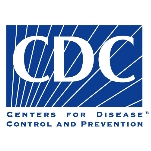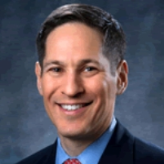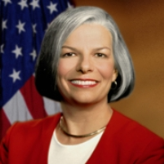The Centers for Disease Control and Prevention is one of 13 operating divisions of the US Department of Health and Human Services. The CDC leads public health efforts to prevent and control infectious and chronic disease, injuries, workplace hazards, disabilities, and environmental health threats. It is also responsible for producing and distributing health information internationally. While the CDC is globally recognized for its scientific research and epidemiologic investigations, newly emerging issues such as terrorism, environmental threats, and a rapidly aging population continue to challenge its capabilities. Although the CDC is supposed to prevent and control infectious disease, it has been accused of blatantly withholding information regarding such diseases as syphilis, autism and Guillain-Barré Syndrome.
Dr. Joseph W. Mountin founded the original Communicable Disease Center in Atlanta, GA, in 1946. At that time it was a relatively insignificant branch of the Public Health Service. As a successor of Malaria Control in War Areas (MCWA), the agency initially focused on combating malaria by killing mosquitoes with insecticide. The agency started out with a budget under $10 million and less than 400 employees. By about 1949, malaria no longer posed a significant health risk in the U.S.,
Centers for Disease Control (CDC) in the United States: 50 Years
The CDC conducts surveillance on a wide range of health threats, from infectious diseases to bioterrorism to environmental hazards. It tries to look ahead to the future epidemics of an infectious disease like SARS or avian flu. Its goal is to prevent such outbreaks through such means as scientific breakthroughs and public education for prevention. It also provides funding for state and local health departments, community based organizations, and academic institutions for a wide array of public health programs and research.
- The Select Agent Program - Oversees labs that work with select agents (biological agents and toxins that can cause serious harm to humans) to prevent accidental or intentional release of the agents.
- Controlled an outbreak of Ebola hemorrhagic fever in Democratic Republic of Congo - As the early reports of the epidemic were inaccurate, which made clinical diagnosis impossible, the CDC scientists were deployed in September 2007 to the Democratic Republic of the Congo to control an outbreak of Ebola hemorrhagic fever.
- Distributed Basic Care Packages in Uganda - As a collaborative effort of CDC, the Ugandan Ministry of Health and other organizations, Basic Care Packages were distributed to promote health and reduce HIV/AIDS infections in rural Uganda and elsewhere in Africa. Basic Care Packages include two insecticide-treated mosquito nets, water vessel, filter cloth, bleach solution to disinfect water, information on how to obtain HIV family counseling, HIV testing services, cotrimoxazole, educational materials on how to use the components in the package, and condoms when requested by distribution site.
- The Research Guide: A Guide for Public Health Research Needs, 2006-2015 - This is a research guide, mainly dedicated to researchers, that focuses on CDC’s health protection research agenda for current and future needs and events in public health.
- Chronic Disease Prevention: Health Risks in the United States Behavioral Risk Factor Surveillance System (BRFSS) - For more than 20 years, CDC’s BRFSS has helped survey U.S. adults to gather information about a wide rage of behaviors that affect their health. The primary focus of these surveys has been on behaviors and conditions that are linked with the leading causes of death-heart disease, cancer, stroke, diabetes, and injury- and other important health issues.
- Project START - A multi-site research study comparing the efficacy of two programs dealing with HIV, other Sexually Transmitted Diseases (STD), and hepatitis prevention focuses on young men recently released from prison. The project was conducted in one state prison in Rhode Island, one in Mississippi, one in California, and in five state prisons in Wisconsin.
- Project RESPECT - A national study evaluating the efficacy of HIV prevention counseling in changing high risk sexual behaviors and preventing new STDs and HIV. The six-year project involved 5,876 men and women who came for diagnosis and treatment for an STD to one of five publicly funded STD clinics across the U.S.
- Pandemic Flu Project: Modeling the Impact of Pandemic Influenza on Pacific Islands - A computer model called FluAid utilizes stored historical information in order to determine the impact range of an influenza pandemic in its first wave. FluAid was used in Pacific Island countries due the lack of collected data in those countries.
- 5 A Day (Health Promotion Campaign) - Aims to increase the fruit and vegetable consumption so that all Americans are consuming the amounts recommended in the Dietary Guidelines for Americans, 2005.
- Get Smart: Know When Antibiotics Work (Health Promotion Campaign):
Sanofi-Aventis of Aventis Pastuer Inc., has obtained a multi-year avian flu vaccine contract from the U.S. Department of Health and Human Services. In 2007 Sanofi received $126.9 million for its bulk pandemic vaccine, and it was expecting 192.5 million in the second quarter of 2008.
CDC deal possibly unlawful - Internal review criticized how firm was picked
(By Alison Young, Atlanta Journal-Constitution)
Jeffrey P. Koplan 1998-2002
Before becoming the director of the CDC in 1998, Koplan was the President of Prudential Center for Health Care Research. After stepping down from the position of CDC director in 2002, Koplan moved on to become Vice President for academic health affairs at Emory University, also located in Atlanta.
- Table of Contents
- Overview
- History
- What it Does
- Where Does the Money Go
- Controversies
- Suggested Reforms
- Comments
- Leave a comment


With a long career in public health, Thomas R. Frieden’s credits include spearheading successful programs to curb tuberculosis in New York City and India. President Barack Obama’s choice to take over the Centers for Disease Control and Prevention (CDC) also has been accused of fomenting a “nanny state” while implementing controversial health measures in the nation’s largest city.

- Latest News
- D.C. Public Schools will Teach all Second-Graders to Ride a Bike
- New Rule in Germany Limits Sales of Sex-Themed E-Books to 10pm to 6am
- What Happened to the 6-Year-Old Tibetan Boy the Chinese Government Kidnapped 20 Years Ago?
- U.S. Ambassador to Turkey Photoshops his Hair Color to Mock Turkish Mayor
- Mystery Artist Calls Attention to Unfixed Potholes by Drawing Penises around Them
The Centers for Disease Control and Prevention is one of 13 operating divisions of the US Department of Health and Human Services. The CDC leads public health efforts to prevent and control infectious and chronic disease, injuries, workplace hazards, disabilities, and environmental health threats. It is also responsible for producing and distributing health information internationally. While the CDC is globally recognized for its scientific research and epidemiologic investigations, newly emerging issues such as terrorism, environmental threats, and a rapidly aging population continue to challenge its capabilities. Although the CDC is supposed to prevent and control infectious disease, it has been accused of blatantly withholding information regarding such diseases as syphilis, autism and Guillain-Barré Syndrome.
Dr. Joseph W. Mountin founded the original Communicable Disease Center in Atlanta, GA, in 1946. At that time it was a relatively insignificant branch of the Public Health Service. As a successor of Malaria Control in War Areas (MCWA), the agency initially focused on combating malaria by killing mosquitoes with insecticide. The agency started out with a budget under $10 million and less than 400 employees. By about 1949, malaria no longer posed a significant health risk in the U.S.,
Centers for Disease Control (CDC) in the United States: 50 Years
The CDC conducts surveillance on a wide range of health threats, from infectious diseases to bioterrorism to environmental hazards. It tries to look ahead to the future epidemics of an infectious disease like SARS or avian flu. Its goal is to prevent such outbreaks through such means as scientific breakthroughs and public education for prevention. It also provides funding for state and local health departments, community based organizations, and academic institutions for a wide array of public health programs and research.
- The Select Agent Program - Oversees labs that work with select agents (biological agents and toxins that can cause serious harm to humans) to prevent accidental or intentional release of the agents.
- Controlled an outbreak of Ebola hemorrhagic fever in Democratic Republic of Congo - As the early reports of the epidemic were inaccurate, which made clinical diagnosis impossible, the CDC scientists were deployed in September 2007 to the Democratic Republic of the Congo to control an outbreak of Ebola hemorrhagic fever.
- Distributed Basic Care Packages in Uganda - As a collaborative effort of CDC, the Ugandan Ministry of Health and other organizations, Basic Care Packages were distributed to promote health and reduce HIV/AIDS infections in rural Uganda and elsewhere in Africa. Basic Care Packages include two insecticide-treated mosquito nets, water vessel, filter cloth, bleach solution to disinfect water, information on how to obtain HIV family counseling, HIV testing services, cotrimoxazole, educational materials on how to use the components in the package, and condoms when requested by distribution site.
- The Research Guide: A Guide for Public Health Research Needs, 2006-2015 - This is a research guide, mainly dedicated to researchers, that focuses on CDC’s health protection research agenda for current and future needs and events in public health.
- Chronic Disease Prevention: Health Risks in the United States Behavioral Risk Factor Surveillance System (BRFSS) - For more than 20 years, CDC’s BRFSS has helped survey U.S. adults to gather information about a wide rage of behaviors that affect their health. The primary focus of these surveys has been on behaviors and conditions that are linked with the leading causes of death-heart disease, cancer, stroke, diabetes, and injury- and other important health issues.
- Project START - A multi-site research study comparing the efficacy of two programs dealing with HIV, other Sexually Transmitted Diseases (STD), and hepatitis prevention focuses on young men recently released from prison. The project was conducted in one state prison in Rhode Island, one in Mississippi, one in California, and in five state prisons in Wisconsin.
- Project RESPECT - A national study evaluating the efficacy of HIV prevention counseling in changing high risk sexual behaviors and preventing new STDs and HIV. The six-year project involved 5,876 men and women who came for diagnosis and treatment for an STD to one of five publicly funded STD clinics across the U.S.
- Pandemic Flu Project: Modeling the Impact of Pandemic Influenza on Pacific Islands - A computer model called FluAid utilizes stored historical information in order to determine the impact range of an influenza pandemic in its first wave. FluAid was used in Pacific Island countries due the lack of collected data in those countries.
- 5 A Day (Health Promotion Campaign) - Aims to increase the fruit and vegetable consumption so that all Americans are consuming the amounts recommended in the Dietary Guidelines for Americans, 2005.
- Get Smart: Know When Antibiotics Work (Health Promotion Campaign):
Sanofi-Aventis of Aventis Pastuer Inc., has obtained a multi-year avian flu vaccine contract from the U.S. Department of Health and Human Services. In 2007 Sanofi received $126.9 million for its bulk pandemic vaccine, and it was expecting 192.5 million in the second quarter of 2008.
CDC deal possibly unlawful - Internal review criticized how firm was picked
(By Alison Young, Atlanta Journal-Constitution)
Jeffrey P. Koplan 1998-2002
Before becoming the director of the CDC in 1998, Koplan was the President of Prudential Center for Health Care Research. After stepping down from the position of CDC director in 2002, Koplan moved on to become Vice President for academic health affairs at Emory University, also located in Atlanta.
Comments


With a long career in public health, Thomas R. Frieden’s credits include spearheading successful programs to curb tuberculosis in New York City and India. President Barack Obama’s choice to take over the Centers for Disease Control and Prevention (CDC) also has been accused of fomenting a “nanny state” while implementing controversial health measures in the nation’s largest city.

- Latest News
- D.C. Public Schools will Teach all Second-Graders to Ride a Bike
- New Rule in Germany Limits Sales of Sex-Themed E-Books to 10pm to 6am
- What Happened to the 6-Year-Old Tibetan Boy the Chinese Government Kidnapped 20 Years Ago?
- U.S. Ambassador to Turkey Photoshops his Hair Color to Mock Turkish Mayor
- Mystery Artist Calls Attention to Unfixed Potholes by Drawing Penises around Them





Comments